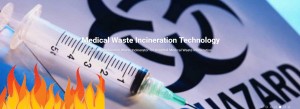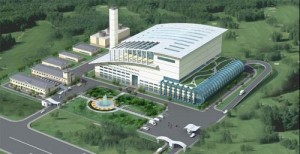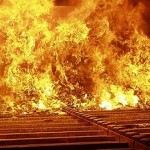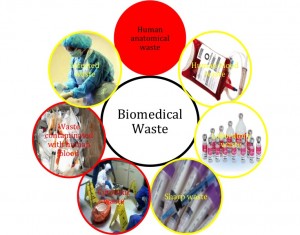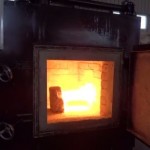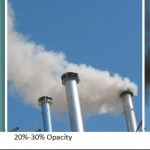Polaris Energy saving News: With the extensive use of the health care industry and the
development of medical disposable products, medical waste generation is growing rapidly.
The latest data show that there were 261, in the city to the community solid waste
pollution prevention information, only these 261 cities this year, medical waste volume
reached 547,500 tons.
Another one statistics show that at the end of 2012, the total number of medical
institutions of 950 297 beds 5.7248 million, according to an average of 1 kg per bed
medical waste each day, the total amount of medical waste generated in the country each
year to reach 200 million tons.
Faced with such a huge amount of waste generated, but many cities are composed of one or a
small number of waste disposal in a single way of handling medical waste incineration. Once
a case of waste incineration plants shut down, the government and the hospital in the
management of medical waste and daily operations, will face enormous challenges.
In fact, hospital waste generated a large part of municipal solid waste and similar low-
risk waste, about 75% to 90%, the remaining 10% to 25% are considered harmful, it may pose
a health risk, hospitals infectious waste is generally not more than 10% of the total
garbage. Reduce the amount of waste generated must be effective category management as the
premise, but now garbage classification level of the hospital, worrying.
Medical waste collection is key to the implementation of environmentally sound management
of medical wastes, but most Chinese hospitals do not pay attention to the sort processing
medical waste, and open place, no obvious signs, classification level is not high.
General hospital with normal household trash bins and yellow medical, hospital and clinic
staff told Post logo, the swab and other body fluids come into contact with the patient
garbage into yellow garbage bag. But the reporter visited some hospitals found that blood
tests and outpatient medical room yellow garbage bags of medical waste both regions, but
also paper, food packaging and other general household waste.
A survey conducted in a hospital in Wuhu, Anhui Province shows that at some medical
personnel classification concept is unclear, non-infectious waste, such as medical supplies
packaging, special medical waste mixed with yellow bag. Although such an approach did not
cause harm to the spread of disease, but it increases the cost of processing medical waste.
Survey on the status of management and disposal of medical waste in a primary hospital also
showed that the passing rate of garbage deposited only 45%. The survey also pointed out
that a lot of medical waste in the absence of sterilization, transported to the transfer
station processing, which may cause secondary pollution garbage occur during transport.
Many local medical waste disposal fee is calculated according to bed, the amount of waste
generated by hospitals not directly related to the processing fee paid. If the hospital
improve the management level, reducing the amount of waste generated, and the same number
of beds, garbage fees will not be reduced, so that is not conducive to encouraging
hospitals source waste separation and reduction.
Medical waste are complicated, including infectious wastes, pathological wastes, chemical
wastes and damaging waste, etc., relating to different textile materials, plastics, glass,
metal and human organizations, a single treatment is difficult to achieve for a variety of
medical garbage harmless treatment.
For different types of medical waste, we have a different processing method and apparatus
have been developed and used around the world. In order to reduce global pollution of
dioxins and furans, the Stockholm Convention on Persistent Organic Pollutants and the World
Health Organization recommends the use of other alternative forms burned. Autoclaving is
probably the most widely used non-burning disinfection, in addition to chemical processing
technology, processing technology and microwave plasma processing technology.
China is now widely used is incineration, this approach tends to produce large amounts of
harmful gas mixture, including hydrochloric acid, dioxins and furans, as well as toxic
metals lead, cadmium and mercury.
A more complete medical waste incineration system shall include the feed system,
incinerator, combustion air system, start the ignition and burn-assisted system, flue gas
purification system, and the residue handling system, automatic monitoring system and
emergency system, which flue gas cleaning system is used to cut dioxin, mercury and other
highly toxic substances by incineration. However, research shows that some old equipment
medical incinerators, waste is a direct smoke exhaust emissions.
South China Institute of Environmental Sciences once a medical waste incineration plant in
Guangdong Province as the research object, through the collection and analysis incineration
plant and the surrounding soil and plant samples, PAHs understand incineration plant (PAHs)
distribution, sources and pollution levels. The results show that medical incinerators soil
surrounding a certain degree of contamination of PAHs detected in the soil 16 polycyclic
aromatic hydrocarbons, PAHs total amount ranging 11.83ng / g ~ 788.24ng / g, mean 236.681ng
/ g; in the study area downwind of the prevailing winds in the soil, total PAHs were
significantly higher than the prevailing winds soil content, and the total concentration of
PAHs in soil increases with distance showed a gradual decrease.